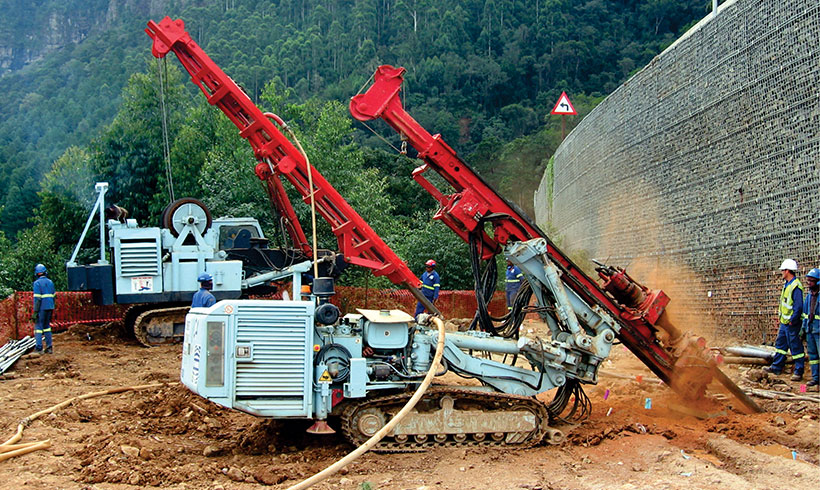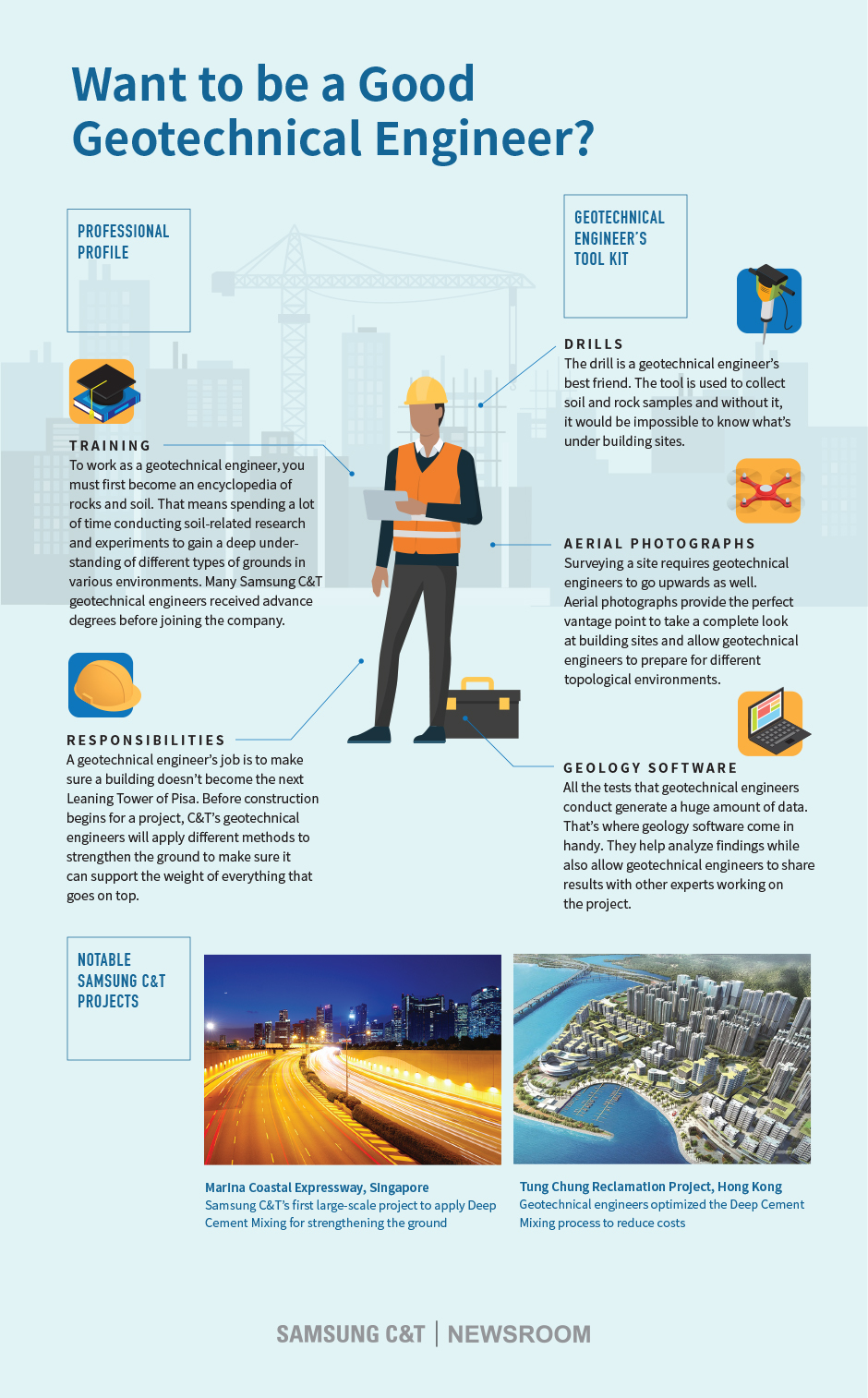What Does Geotechnical Engineering For Construction Projects Do?
What Does Geotechnical Engineering For Construction Projects Do?
Blog Article
4 Simple Techniques For Geotechnical Engineering For Construction Projects
Table of ContentsThings about Geotechnical Engineering For Construction ProjectsThe Basic Principles Of Geotechnical Engineering For Construction Projects 10 Easy Facts About Geotechnical Engineering For Construction Projects ExplainedSome Ideas on Geotechnical Engineering For Construction Projects You Should Know4 Easy Facts About Geotechnical Engineering For Construction Projects ShownFascination About Geotechnical Engineering For Construction ProjectsThe Ultimate Guide To Geotechnical Engineering For Construction Projects
and Kovacs, W. (1981 ), An Introduction to Geotechnical Engineering, Prentice-Hall, Inc. Deep Check Tech (2023 ): Deep Scan Tech reveals surprise frameworks at the website of Denmark's highest structure. "Geofrost Coring". GEOFROST. Obtained 20 November 2020. Han, Jie (2015 ). Principles and Practice of Ground Enhancement. Wiley. ISBN 9781118421307. RAJU, V. R.Ground Renovation Technologies and Case Histories. Singapore: Research Posting Solutions. p. 809. ISBN978-981-08-3124-0. Ground Renovation Concepts And Applications In Asia. Pariseau, William G. (2011 ). Design evaluation in rock mechanics. CRC Press. Hegde, A.M. and Palsule P (Geotechnical Engineering for Construction Projects).S. (2020 ), Efficiency of Geosynthetics Reinforced Subgrade Subjected to Repetitive Automobile Plenties: Speculative and Numerical Research Studies.
Cengage Learning, Stamford, 666 p. Atkinson, J., 2007. The technicians of soils and structures. The Observational Approach in ground design concepts and applications.
The Greatest Guide To Geotechnical Engineering For Construction Projects
Research laboratory and field testing plays a crucial function in this procedure. By removing examples from the earth's subsurface and using a suite of tests, geotechnical designers can predict the behavior of dirt layers and review their viability for different construction endeavours. The essence of geotechnical design in civil engineering can not be overemphasized, attributable to several variables: The preliminary action in any geotechnical research study entails identifying the soil kind at the building and construction website.
Comprehending these characteristics guarantees that just appropriate dirt kinds are picked for the development, thus averting prospective structural failures. The foundation functions as the bedrock of any kind of building and construction task. Choosing the appropriate foundation type is a decision that depends upon the detailed evaluation supplied by geotechnical engineering. This makes sure the long life and security of frameworks by suiting the loads they will bear.

Geotechnical site examination is an essential action in the preparation and implementation of any kind of building project. It entails the collection and evaluation of data associated with the physical properties of dirt and rock underneath a recommended building and construction site. This information is essential for the style and building of risk-free, stable, and lasting structures.
Geotechnical Engineering For Construction Projects Fundamentals Explained
In this blog, we will certainly explore the importance of geotechnical site examination, its various elements, and just how it benefits building and construction projects. Geotechnical website examination, also referred to as subsurface expedition, involves a series of activities intended at identifying the dirt, rock, and groundwater conditions at a building and construction website. The primary purposes are to identify possible geotechnical risks, evaluate the engineering buildings of subsurface materials, and give recommendations for the style and building of structures, retaining walls, and other structures.
The desk study aids in determining prospective geotechnical issues and intending the succeeding fieldwork. This includes observing visit their website the topography, drainage patterns, existing frameworks, greenery, and any indications of instability or erosion.
Some Known Factual Statements About Geotechnical Engineering For Construction Projects
Shallow examination pits are excavated to straight observe and example the soil and rock. This approach works for studying the upper layers of the subsurface and recognizing near-surface hazards. Non-invasive geophysical methods, such as seismic refraction, ground-penetrating radar (GPR), and electric resistivity tomography (ERT), are used to map subsurface problems and detect abnormalities.
Dirt and rock examples accumulated throughout the area examination are subjected to laboratory testing to establish their physical and mechanical properties. These tests supply crucial information for geotechnical evaluation and layout.
The main benefit of geotechnical website examination is ensuring the safety and stability of structures. By comprehending the subsurface conditions, designers can make foundations and various other structural aspects that can endure the loads and environmental pressures they will certainly go through. This reduces the risk of negotiation, decrease, and structural failing.
Geotechnical Engineering For Construction Projects Things To Know Before You Get This
This guarantees effective and risk-free building and construction practices. Geotechnical site investigations are often required by developing codes and guidelines.
This details is very useful for project managers, designers, and service providers in developing practical routines, spending plans, and backup strategies. Geotechnical Engineering for find out Construction Projects. Skyscraper in a Coastal AreaIn a coastal city, a skyscraper property structure was intended on a site with presumed loose sand down payments and a high water table. A comprehensive geotechnical investigation, consisting of borehole exploration, CPT, and geophysical studies, was conducted
Geotechnical Engineering For Construction Projects - The Facts
Based on these findings, the foundation layout was customized to consist of deep stack structures prolonging into steady strata, and ground improvement strategies, such as vibro-compaction, were carried out to reduce liquefaction threats. This positive approach ensured the safety and security and stability of the structure while preventing pricey post-construction removal. Facilities Development on a Sloping TerrainA major framework job, involving the building of a freeway and bridges, was intended on a hilly surface with steep slopes.

The Leaning Tower of Pisa (Italy), an iconic building wonder, is well known for its unintentional tilt from substantial geotechnical problems. The tower's foundation was improperly created to manage the soft, unpredictable soil under it, resulting in uneven negotiation and its distinctive lean. Our globe Our site is populated with outstanding infrastructure projectsfrom looming high-rises to sprawling bridgesall standing statement to the advancement of the various construction devices and methods offered.
Geotechnical design is a specific field within civil design that concentrates on studying the habits of planet materials. This branch digs deep right into the groundinvestigating just how the soil, rock, and groundwater at a building website can influenceand be affected bythe facilities that we set up on and right into them. Prior to a solitary brick is laid or a concrete structure put, geotechnical designers probe right into the earthgathering vital information about the site's soil composition, rock structure, and groundwater levels.
A Biased View of Geotechnical Engineering For Construction Projects

is a tool used to assess the stability and load-bearing ability of heaps throughout installment, leveraging the concept of wave propagation. It optimizes construction efficiency by providing real-time evaluations, thus making sure risk-free and efficient stack foundations. One of the functional applications of geotechnical design includes choosing and performing the best approaches for foundation construction.
Pile driving stands for greater than the mere act of inserting structural components right into the ground. As a matter of fact, it is a carefully coordinated process of transferring a framework's tons past the less secure soil layers more detailed to the surfacedown to the extra substantial strata that lie underneath. When it comes to heap driving, consider just how geotechnical engineers adeptly use this technique to equally distribute the framework's weight.
Report this page